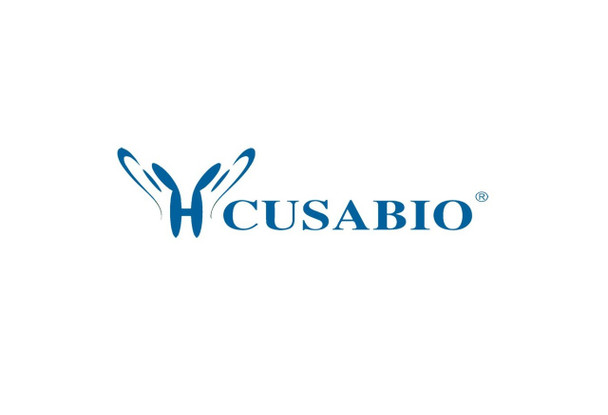Cusabio Human Recombinants
Recombinant Human Deoxynucleotidyltransferase terminal-interacting protein 1 (DNTTIP1) | CSB-EP007089HU
- SKU:
- CSB-EP007089HU
- Availability:
- 13 - 23 Working Days
Description
Recombinant Human Deoxynucleotidyltransferase terminal-interacting protein 1 (DNTTIP1) | CSB-EP007089HU | Cusabio
Alternative Name(s): Terminal deoxynucleotidyltransferase-interacting factor 1
Gene Names: DNTTIP1
Research Areas: Epigenetics and Nuclear Signaling
Organism: Homo sapiens (Human)
AA Sequence: MGATGDAEQPRGPSGAERGGLELGDAGAAGQLVLTNPWNIMIKHRQVQRRGRRSQMTTSFTDPAISMDLLRAVLQPSINEEIQTVFNKYMKFFQKAALNVRDNVGEEVDAEQLIQEACRSCLEQAKLLFSDGEKVIPRLTHELPGIKRGRQAEEECAHRGSPLPKKRKGRPPGHILSSDRAAAGMVWKPKSCEPIRREGPKWDPARLNESTTFVLGSRANKALGMGGTRGRIYIKHPHLFKYAADPQDKHWLAEQHHMRATGGKMAYLLIEEDIRDLAASDDYRGCLDLKLEELKSFVLPSWMVEKMRKYMETLRTENEHRAVEAPPQT
Source: E.coli
Tag Info: N-terminal 6xHis-tagged
Expression Region: 1-329aa
Sequence Info: Full Length
MW: 41 kDa
Purity: Greater than 90% as determined by SDS-PAGE.
Relevance: Increases DNTT terminal deoxynucleotidyltransferase activity (in vitro) . Also acts as a transcriptional regulator, binding to the consensus sequence 5'-GNTGCATG-3' following an AT-tract. Associates with RAB20 promoter and positively regulates its transcription. Binds DNA and nucleosomes; may recruit HDAC1 complexes to nucleosomes or naked DNA.
Reference: The DNA sequence and comparative analysis of human chromosome 20.Deloukas P., Matthews L.H., Ashurst J.L., Burton J., Gilbert J.G.R., Jones M., Stavrides G., Almeida J.P., Babbage A.K., Bagguley C.L., Bailey J., Barlow K.F., Bates K.N., Beard L.M., Beare D.M., Beasley O.P., Bird C.P., Blakey S.E. , Bridgeman A.M., Brown A.J., Buck D., Burrill W.D., Butler A.P., Carder C., Carter N.P., Chapman J.C., Clamp M., Clark G., Clark L.N., Clark S.Y., Clee C.M., Clegg S., Cobley V.E., Collier R.E., Connor R.E., Corby N.R., Coulson A., Coville G.J., Deadman R., Dhami P.D., Dunn M., Ellington A.G., Frankland J.A., Fraser A., French L., Garner P., Grafham D.V., Griffiths C., Griffiths M.N.D., Gwilliam R., Hall R.E., Hammond S., Harley J.L., Heath P.D., Ho S., Holden J.L., Howden P.J., Huckle E., Hunt A.R., Hunt S.E., Jekosch K., Johnson C.M., Johnson D., Kay M.P., Kimberley A.M., King A., Knights A., Laird G.K., Lawlor S., Lehvaeslaiho M.H., Leversha M.A., Lloyd C., Lloyd D.M., Lovell J.D., Marsh V.L., Martin S.L., McConnachie L.J., McLay K., McMurray A.A., Milne S.A., Mistry D., Moore M.J.F., Mullikin J.C., Nickerson T., Oliver K., Parker A., Patel R., Pearce T.A.V., Peck A.I., Phillimore B.J.C.T., Prathalingam S.R., Plumb R.W., Ramsay H., Rice C.M., Ross M.T., Scott C.E., Sehra H.K., Shownkeen R., Sims S., Skuce C.D., Smith M.L., Soderlund C., Steward C.A., Sulston J.E., Swann R.M., Sycamore N., Taylor R., Tee L., Thomas D.W., Thorpe A., Tracey A., Tromans A.C., Vaudin M., Wall M., Wallis J.M., Whitehead S.L., Whittaker P., Willey D.L., Williams L., Williams S.A., Wilming L., Wray P.W., Hubbard T., Durbin R.M., Bentley D.R., Beck S., Rogers J.Nature 414:865-871(2001)
Storage: The shelf life is related to many factors, storage state, buffer ingredients, storage temperature and the stability of the protein itself. Generally, the shelf life of liquid form is 6 months at -20?/-80?. The shelf life of lyophilized form is 12 months at -20?/-80?.
Notes: Repeated freezing and thawing is not recommended. Store working aliquots at 4? for up to one week.
Function: Increases DNTT terminal deoxynucleotidyltransferase activity (in vitro)
Involvement in disease:
Subcellular Location: Nucleus
Protein Families:
Tissue Specificity:
Paythway:
Form: Liquid or Lyophilized powder
Buffer: If the delivery form is liquid, the default storage buffer is Tris/PBS-based buffer, 5%-50% glycerol. If the delivery form is lyophilized powder, the buffer before lyophilization is Tris/PBS-based buffer, 6% Trehalose, pH 8.0.
Reconstitution: We recommend that this vial be briefly centrifuged prior to opening to bring the contents to the bottom. Please reconstitute protein in deionized sterile water to a concentration of 0.1-1.0 mg/mL.We recommend to add 5-50% of glycerol (final concentration) and aliquot for long-term storage at -20?/-80?. Our default final concentration of glycerol is 50%. Customers could use it as reference.
Uniprot ID: Q9H147
HGNC Database Link: HGNC
UniGene Database Link: UniGene
KEGG Database Link: KEGG
STRING Database Link: STRING
OMIM Database Link: OMIM









